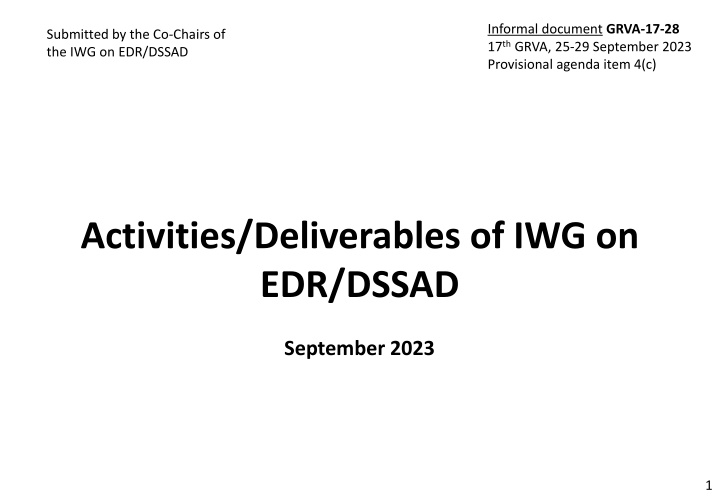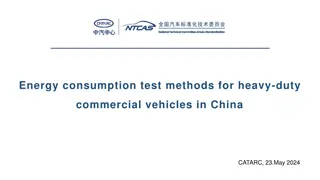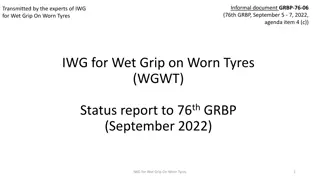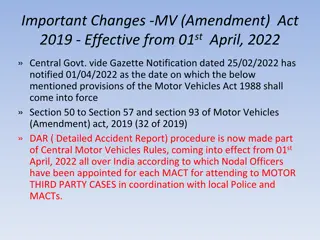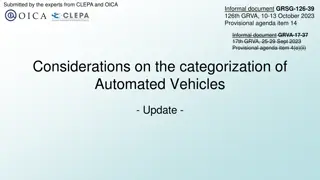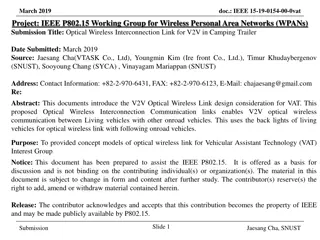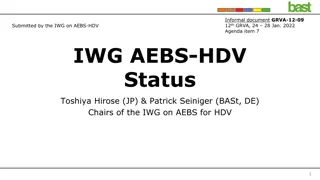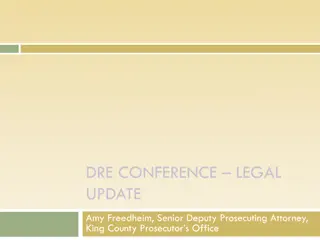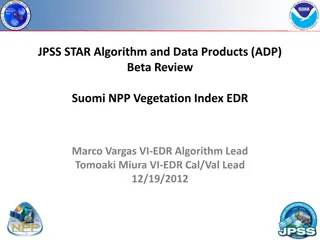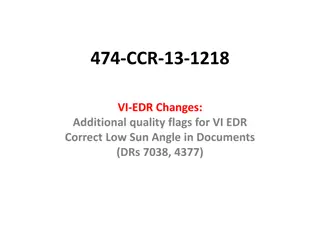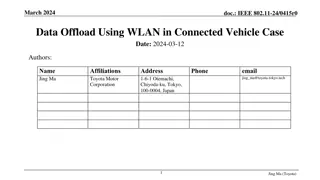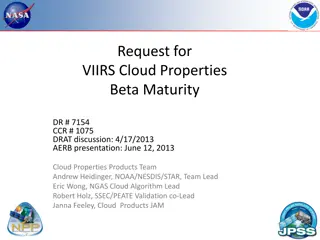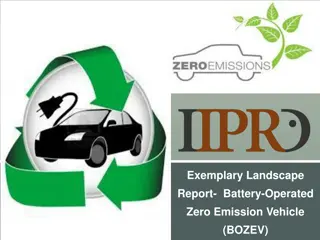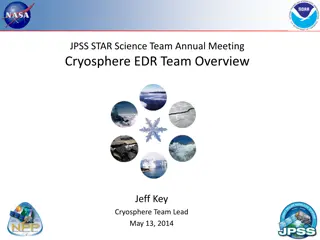Mission of EDR/DSSAD IWG and Analysis Plan for Conventional Vehicles
Developing draft proposals for Event Data Recorder (EDR) and Data Storage System for Automated Driving (DSSAD) for conventional and automated/autonomous vehicles. Tasks include defining scope, objectives, requirements, and safety events for recording data. Current work involves analyzing safety performance events and crash data. Future work includes documenting DSSAD performance elements and requirements for Automated Lane Keeping Systems (ALKS).
Download Presentation

Please find below an Image/Link to download the presentation.
The content on the website is provided AS IS for your information and personal use only. It may not be sold, licensed, or shared on other websites without obtaining consent from the author.If you encounter any issues during the download, it is possible that the publisher has removed the file from their server.
You are allowed to download the files provided on this website for personal or commercial use, subject to the condition that they are used lawfully. All files are the property of their respective owners.
The content on the website is provided AS IS for your information and personal use only. It may not be sold, licensed, or shared on other websites without obtaining consent from the author.
E N D
Presentation Transcript
Informal document GRVA-17-28 17thGRVA, 25-29 September 2023 Provisional agenda item 4(c) Submitted by the Co-Chairs of the IWG on EDR/DSSAD Activities/Deliverables of IWG on EDR/DSSAD September 2023 1
Mission of the EDR/DSSAD IWG ToR of the IWG (ECE/TRANS/WP.29/1147 Annex VII) (adopted in the 178th WP.29 in June 2019) The IWG shall develop draft proposals for Event Data Recorder (EDR) for conventional vehicles and automated/autonomous vehicles and for Data Storage System for Automated Driving (DSSAD) for automated/autonomous vehicles. These categories shall be understood as systems collecting and storing a determined range of vehicle data, including: a. Information related to collisions valuable for accident reconstruction (EDR); b. The status of the automated/autonomous driving system and the status of the driver (DSSAD). To this effect, the IWG shall address the following issues: a. Define the scope and specific objectives of and differences between EDR and DSSAD, b. Define EDR and DSSAD requirements. In particular, the IWG will consider defining the categories of data recorded, the events triggering recording, as well as technical specifications in terms of performances of such systems, such as the required endurance, accessibility, storage capacity or the specific security requirements, as well as the required privacy and data protection by design features. 2
Conventional Vehicles ADS Equipped Vehicles DSSAD Analysis Plan: DSSAD is active when: ADS system/feature is activated ADS system in transition of control DSSAD Data recorded to evaluate/monitor overall safety performance and identify when ADS is in control of vehicles In the above cases, the following safety relevant events/circumstances should record (or trigger to record) relevant data elements: Impact situations (EDR triggered impacts or impacts that are sensed but below EDR trigger thresholds) Active conflict situations (e.g., incursion into safety envelope / near miss ) Execution/attempted execution of minimal risk maneuvers. Operator emergency shutdown request Remote operator intervention. Positive Safety Performance events/occurrences?? Captures data for safety performance relevant events/situations Volume of data may require off-board storage. For crash events which meet the EDR triggering criteria that event should be flagged so that the EDR data can be tied to associated DSSAD data elements EDR/ADS Crash data recorded to aid in crash reconstruction and analysis of safety equipment performance. Crash and limited precrash data Triggered on significant crash events Typically, capable of being stored on board the vehicle Includes ADS system state data elements Note: there were some SG members/CP s that suggested that the DSSAD should be continuously recording data whenever the ADS system/feature is active and that critical safety events/occurrences be data elements/flags. Others believe that the system should only record during (and sometime prior) to a safety relevant events/situation.
Overview of the IWG activities Projects Completed Current Work Future Work Comparison between EDR and DSSAD (WP29-179-19, Nov. 2019) Comparison between EDR and DSSAD DSSAD performance elements guidance document (June 2024) DSSAD requirements (ALKS (UNR157)) (181st WP.29, June 2020) (189th WP.29, March 2023) DSSAD Updating consolidated document of domestic activities on DSSAD (188th WP.29, November 2022) Primary purposes of DSSAD, Prioritization of discussion topics EDR requirements (UNR 160 00/01 series) (183rd WP.29, Mar. 2021), and amendments (186th WP.29, Mar. 2022) EDR EDR for HDV (Nov 2023) EDR performance elements for ADS (June 2024) EDR Step 2 (Nov. 2024) Acceleration Data Accuracy Verification Procedures (125th GRSG, 2023/11&15 etc.) 4
Activities of EDR/DSSAD IWG since GRVA #16 SG-EDR #36 June 6 June 8 June 27 June 28 TF Data Elements (EDR) #14 SG-DSSAD #15 SG-EDR #37 & TF Data Elements (EDR) #15 EDR/DSSAD IWG #22 (prep session for Sept. ) August 29 EDR/DSSAD IWG #23 (hybrid in D.C. the US) September 6-8 5
Summary of Recent Activities on DSSAD Group is focusing on discussion of DSSAD Performance Elements Guidance Document to submit to WP.29 June 2024. The guidance document consists of the following chapters: 1. 2. 3. 4. 5. 6. 7. Objective Data Storage Data Format Performance Elements Data Retrievability/Accessibility Data Security Misc. 6
Current Schedule for EDR/DSSAD IWG SG-DSSAD #16 SG-EDR #37 EDR/DSSAD IWG #24 (Virtual) EDR/DSSAD IWG #25 (hybrid in Tokyo, Japan) November 20 November 21 February April 9-11 7
